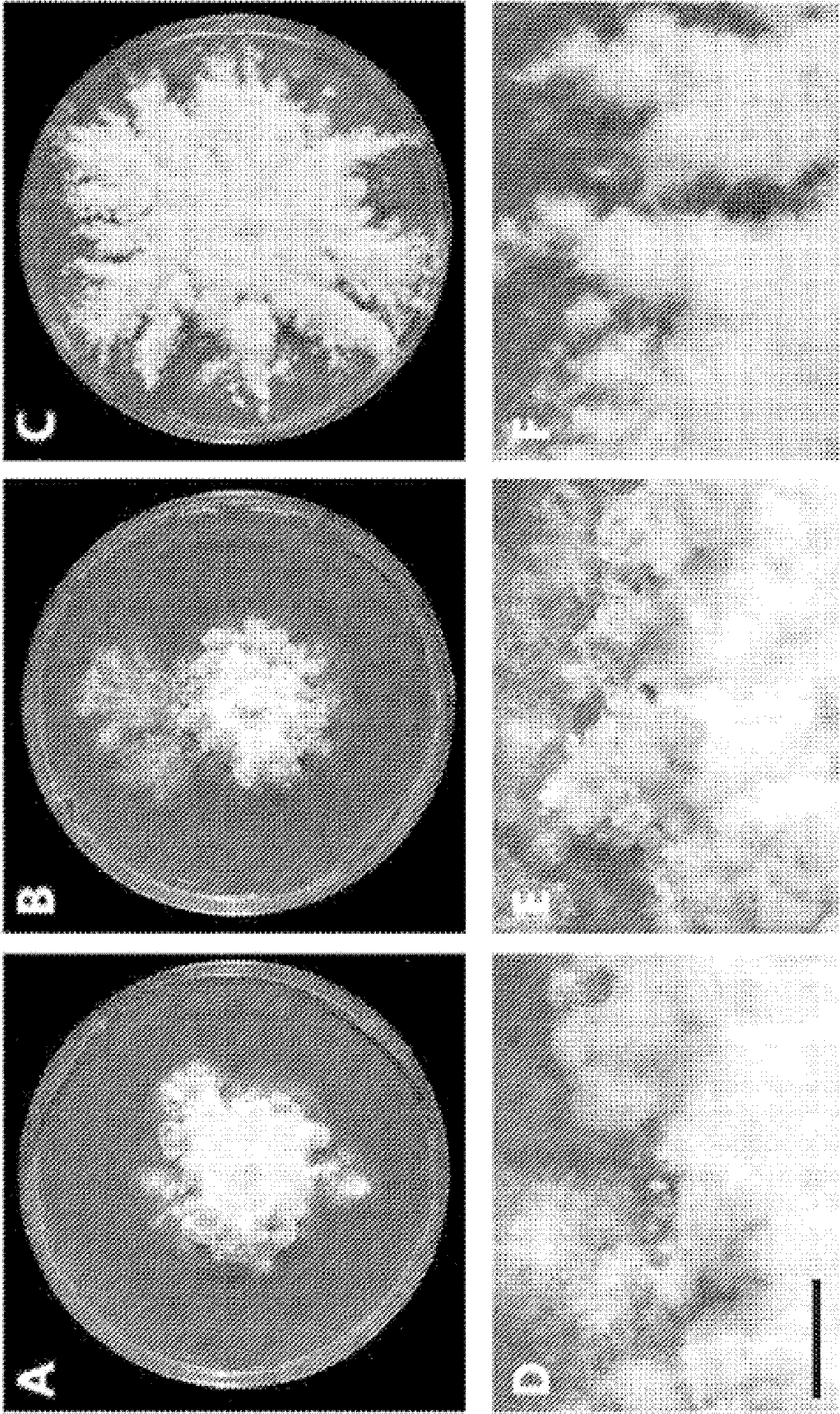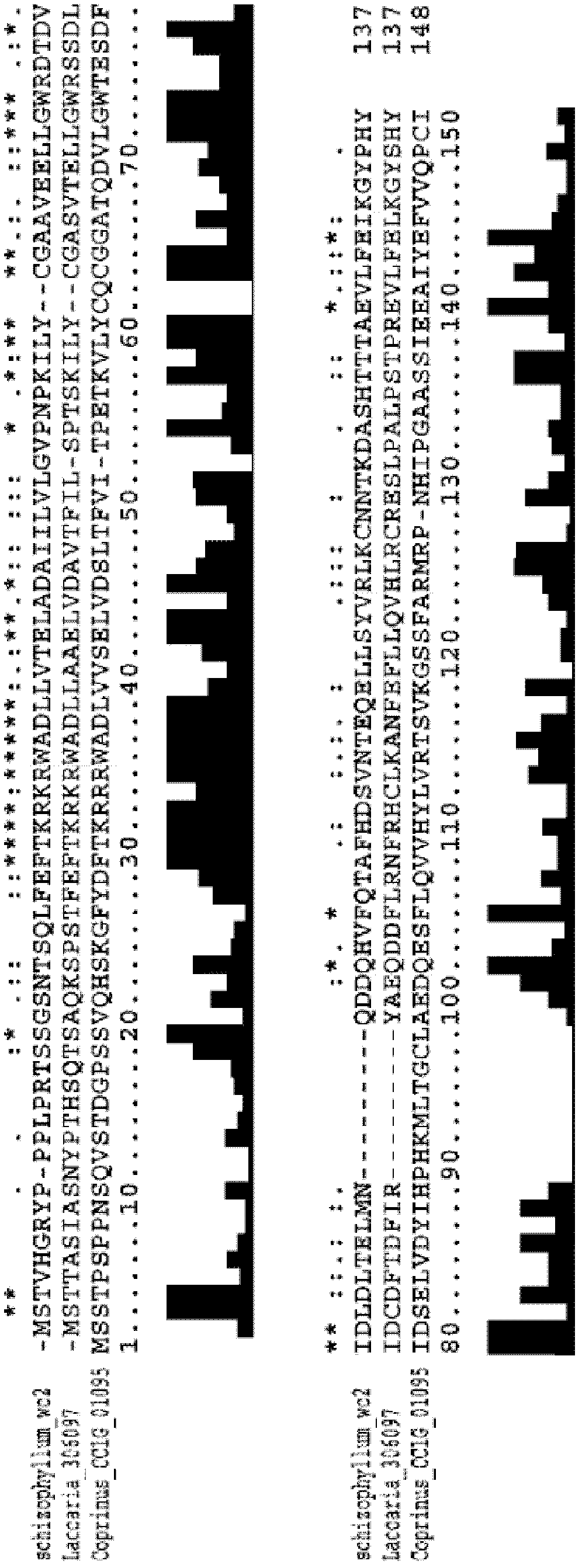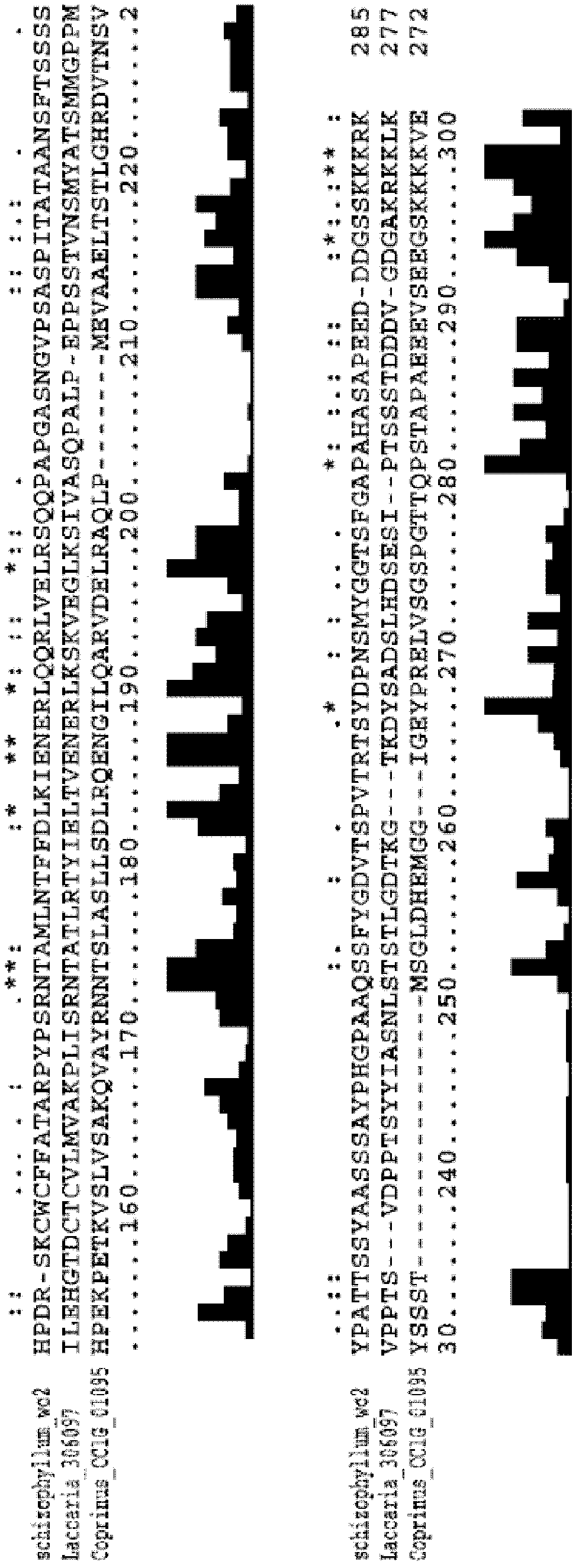Regulators involved in mushroom formation
A technology for mushrooms and fungi, applied in the field of regulators involved in the formation of mushrooms, can solve problems such as genes not being described
- Summary
- Abstract
- Description
- Claims
- Application Information
AI Technical Summary
Problems solved by technology
Method used
Image
Examples
Embodiment 1
[0129] Example 1: Confirmation of hypothetical transcription factors in the Schizophyllum genome
[0130] passJoint Genome Institute automatically called genes of Schizophyllum strain 4-8 (FGSC#9210) genome (8.29X coverage) and obtained 13181 predicted genes (see http: / / jgi.doe.gov / Scommune). These genes were automatically annotated using GO (Gene Ontology) (Ashburner et al., 2000), KOG (euKaryotic Orthologous Groups) (Koonin et al., 2004) and PFAM algorithm (Finn et al., 2008). This automated annotation serves as a starting point to identify transcription factors (TFs):
[0131] • 190 genes were placed in the GO entry "Transcription Factor Activity" based on known DNA binding domains (GO:0003700).
[0132] · The KOG annotation algorithm predicted 569 genes commonly involved in transcription (Functional ID: "K"). Of these, 205 transcription factors were manually identified.
[0133] • Based on the presence of the PFAM domain PF00096 / IPR007087 (zinc finger structure, C2H...
Embodiment 2
[0173] Example 2: Proof of principle: Knockout of the fst3 (protein ID 257422) gene affects mushroom development
[0174] The putative transcription factor gene fst3 (Protein ID 257422) was knocked out. For this, the pDelcas vector described in Ohmetal. (2010) was used. Primers used to create knockout constructs are shown in Table 2. This knockout construct, designated pRO097, contains regions flanking the coding sequence of fst3 with the nourthricin resistance gene in between. The phleomycin resistance gene cassette is located elsewhere in this construct (see Ohm et al., 2010 for details). Schizophyllum strain H4-8 was modified as described by van Peer et al., 2009. Regeneration medium does not contain antibiotics, where selection plates contain 20 μg ml -1 Nourthricin. The deletion of the target gene was verified by PCR (see Ohm et al., 2010 for the procedure). Monokaryons compatible with the gene deletion were selected from spores produced by crossing the mutant str...
Embodiment 3
[0175] Example 3: Proof of principle: Knockout of fst4 (Protein ID 66861) affects mushroom development.
[0176] The putative transcription factor gene fst4 (Protein ID 66861) was knocked out. For this, the pDelcas vector described in Ohmetal. (2010) was used. Primers used to create knockout constructs are shown in Table 2. This knockout construct, designated pRO191, contains regions flanking the coding sequence of fst4 with the nourthricin resistance gene in between. The phleomycin resistance gene cassette is located elsewhere in this construct (see Ohm et al., 2010 for details). Schizophyllum strain H4-8 was modified as described by van Peer et al., 2009. Regeneration medium does not contain antibiotics, where selection plates contain 20 μg ml -1 Nourthricin. The deletion of the target gene was verified by PCR (see Ohm et al., 2010 for the procedure). Monokaryons compatible with the gene deletion were selected from spores produced by crossing the mutant strain with t...
PUM
 Login to View More
Login to View More Abstract
Description
Claims
Application Information
 Login to View More
Login to View More - R&D
- Intellectual Property
- Life Sciences
- Materials
- Tech Scout
- Unparalleled Data Quality
- Higher Quality Content
- 60% Fewer Hallucinations
Browse by: Latest US Patents, China's latest patents, Technical Efficacy Thesaurus, Application Domain, Technology Topic, Popular Technical Reports.
© 2025 PatSnap. All rights reserved.Legal|Privacy policy|Modern Slavery Act Transparency Statement|Sitemap|About US| Contact US: help@patsnap.com



